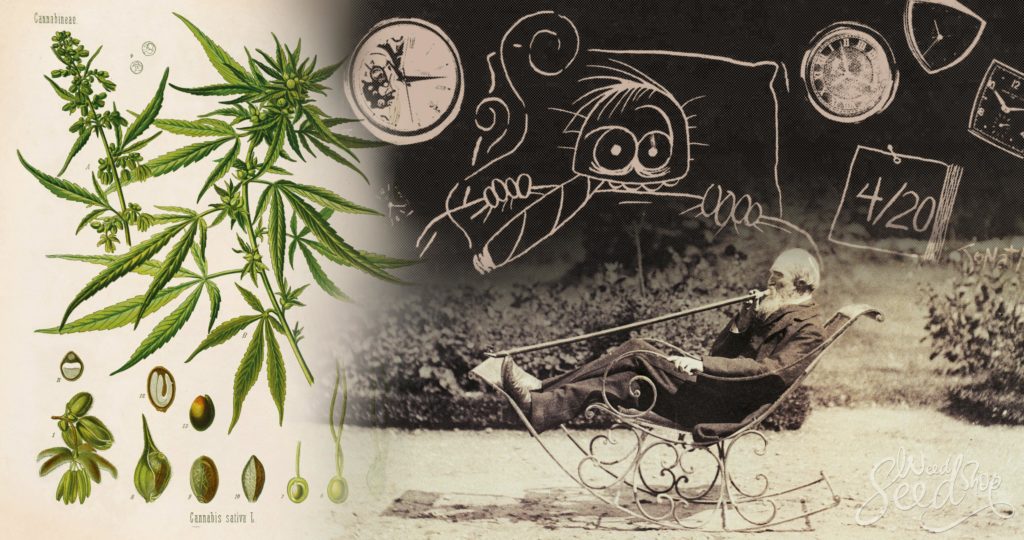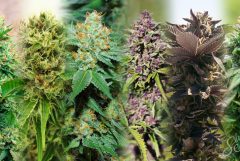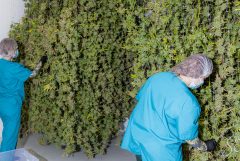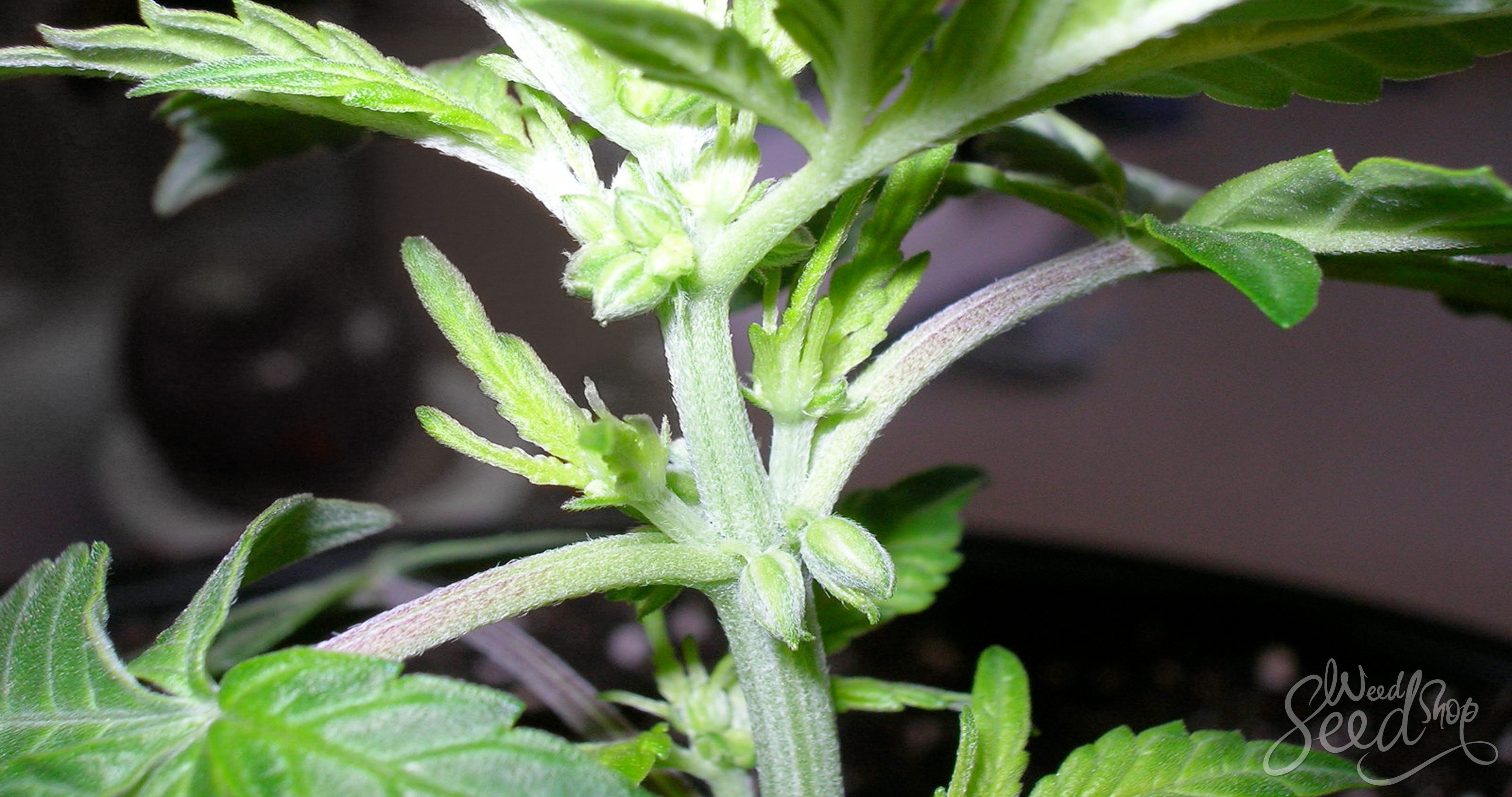If you think you know everything about the history cannabis, think again! From its humble beginnings all the way up to its place in our current world, cannabis is steeped with a history very few people know anything about. Where did the saying “420” come from? What was the first culture to experiment with pot? Read on to find these answers and more about the secret history of cannabis.
- A look into the history of cannabis
- 1. The origin of cannabis is still unknown
- 2. Japan has quite the secret history of cannabis
- 3. Cannabis and beer are basically cousins
- 4. The name ‘marijuana’ has its own history
- 5. The American Founding Fathers grew cannabis
- 6. Vehicles and cannabis have an interesting relationship
- 7. 420 May not actually be a police code
- 8. Uruguay was ahead of the curve
- 9. Cannabis may have been an ancient tumour treatment
- 10. Prescription meds have used cannabis for years
Over 147 million people around the world have experimented with cannabis, making it the most widely used and cultivated substance into the entire world.
Whether you refer to it as marijuana, weed, pot, dope, spliff, Mary Jane, or the Devil’s lettuce, if you think you know everything about the history cannabis, think again!
Even though it has been the centre of attention for quite some time thanks to legalization efforts and destigmatization, a lot of its history remains unknown.
Want to brush up on some of your knowledge about the history of cannabis? We’re here to present you with some of the darker, unknown secrets behind this fascinating drug.
Let’s get into it!
A look into the history of cannabis
1. The origin of cannabis is still unknown
The origin of cannabis remains quite controversial. The oldest references to cannabis go all the way back to 2727 B.C. It was assumed that “a Chinese emperor named Shen Nung” discovered it and began using it for unknown medicinal purposes.
Yet, we’re not exactly sure how these were recorded, as the only testaments research has is a carved symbol and hieroglyphic images.
What’s more is that Shen Nung was actually not the first emperor of China. The first one was named Qin Shi Huang (from 260 B.C), who is also associated with being the first to discover and use cannabis.
As you can see, these names and dates do not actually add up.
To date, the most “accurate” origins of cannabis actually lie within the Taiwanese population, as they adorned pottery with fibres made from hemp.
Still, the actual name or culture regarding the primary use of cannabis is still somewhat mysterious.
2. Japan has quite the secret history of cannabis
Japan has some incredibly serious anti-drug laws. We’re talking punishable by death in some cases and many no-tolerance policies. Their laws are stricter than most countries in the world.
And, yet, there is an interesting spin on the history of cannabis within Japan. In fact, some sources suggest that cannabis use in this country dates back over 11,00 years ago. While we don’t have actual evidence if cannabis was smoked back then, it did appear to be integrated into the culture.
For example, history from this time shows that hemp fibres were woven into clothing textiles and decorations. Hemp was both functional and seemingly attractive, making it a perfect ingredient for daily usage.
Some theories even suggest that Japanese brides wore veils sewn with cannabis plants to demonstrate their beauty and purity to their husbands. Today, it is suggested that some cultures actually use cannabis as part of their spiritual experiences to exhibit this purity and natural energy.
Furthermore, hemp was also used to make more durable tools, such as fishlines, bowstrings, and other makeshift weapons. This was seen both in daily living and in wartime, and the ingredient was in high demand.
Finally, it appears that some ancient proverbs, haikus, and other poetry readings mentioned cannabis for its spiritual nature and representation of purity and beauty.
3. Cannabis and beer are basically cousins
Hard to choose between a good smoke session or a pint of your favourite beer? Love both tastes and sensations equally? That association, whether you realize it or not, is not as strange as you think.
In fact, you might be surprised to learn that the two are closely related, especially once you take the main ingredient into consideration.
The ingredient we’re talking about here is called Humulus lupulus L (better known as hops).
Sound familiar? Probably. It’s one of the most common slang nicknames coined for modern beer.
Actually, hops, a natural medicine, is associated with altering consciousness and calming the central nervous system. It’s also associated with healthier sleep, decreased anxiety, and increased mood and self-esteem. Sounds like some of the effects of beer, right?
Turns out, it’s also one of the extracts composed of cannabis, and for quite some time, this was frowned upon (without realizing it was also in the alcohol many of us coveted).
Although hops is one of the main ingredients in beer, hops itself not regulated in alcohol production. This means it can be manufactured without any restrictions.
If it seems hypocritical, maybe it is. Maybe it’s due to the stigmatization on illicit drugs in general. After all, we all know how much legislation likes to keep their alcohol legal for purchase and consumption.
4. The name ‘marijuana’ has its own history
What’s in a name? A story, that’s what!
The development of individual substance names tend to come with their own complicated and fascinating histories.
While cannabis is commonly referred to as the substance’s scientific name, marijuana is another equally popular term. Its origins appear to be rooted in the early twentieth century Mexican Revolution.
Notice how the two terms cannabis and marijuana don’t sound anything alike.
The history of cannabis suggests that, when Mexicans fled from their border during this Revolution, they brought their drug with them. Makes sense, right? The Mexican name they used was marihuana.
Apparently, in looking at the history of cannabis, that name caught on, but not necessarily in a positive or endearing way.
It is assumed that anti-drug movements, likely influenced by covert themes of racism and hostility, used this name out of spite. It was a derogatory term for the drug and the Mexican people who used it.
But, like so many infamous names and phrases in history, this one just happened to stick, whether intended or not.
5. The American Founding Fathers grew cannabis
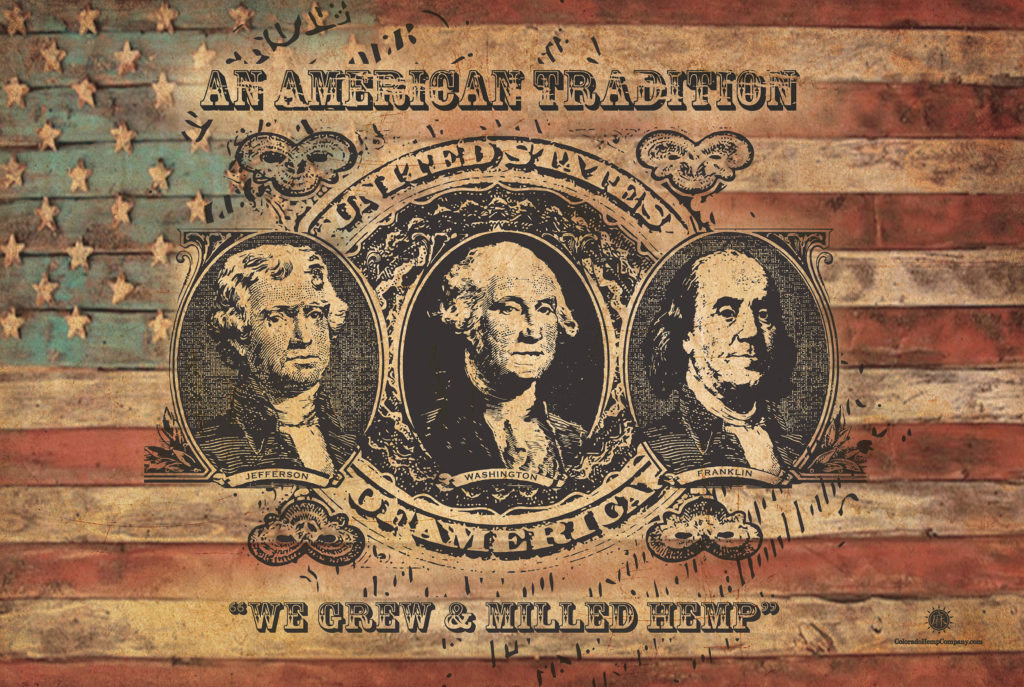
Bet you didn’t learn this fun history of cannabis fact in your high school history class!
Sociocultural rumours suggest that U.S politicians were busily growing hemp during the early colonization of America. These men were growing hemp, often used for their clothing and textiles, similar to how Asian countries used them in ancient times. But, growing hemp seems rather harmless, right?
However, some controversial sources discussing the darker history of cannabis also suggest that these men were also smoking the substance, in addition to just growing it. That is, while America was in its early stages of development, its founders were apparently getting stoned.
While the high from hemp is not necessarily known for its smoking properties and pleasant moods, it is associated with altering consciousness.
In fact, although it is uncertain if it is factual, Thomas Jefferson was once allegedly quoted stating, some of my finest hours have been spent on my back veranda, smoking hemp and observing as far as my eye can see.
Some sources even suggest that the U.S Declaration of Independence was written on paper made of, you guessed it, HEMP! Talk about starting a new country off on the right foot.
6. Vehicles and cannabis have an interesting relationship
No, we’re not talking about driving stoned, although that has its own interesting history, too.
We’re talking about the fascinating history of cannabis suggesting that the famous developer of the automobile, Henry Ford, actually built a hemp-based car.
According to these sources, Ford once invented a plastic car with the intent to make a stronger but more compact and effective ride to the standard 1940s metal vehicles.
What did this car consist of? Soybean, ramie, resin binder, cellulose fibre, and hemp. No, we’re not sure if Ford was getting stoned, but even he seemed to understand the strengthening effects that cannabis had to offer.
While this “exact recipe” is not proven, as sources from his estate and historical museum claim they’ve been “lost,” his inspiration continues to leave quite the influence.
In recent years, scientists have been experimenting with all sorts of natural materials and ingredients, such as oils and fibres, to determine their effect on vehicles.
And, it’s not just in cars. The elusive properties of cannabis are being used in all forms of industries, from healthcare to engineering to education to business.
7. 420 May not actually be a police code
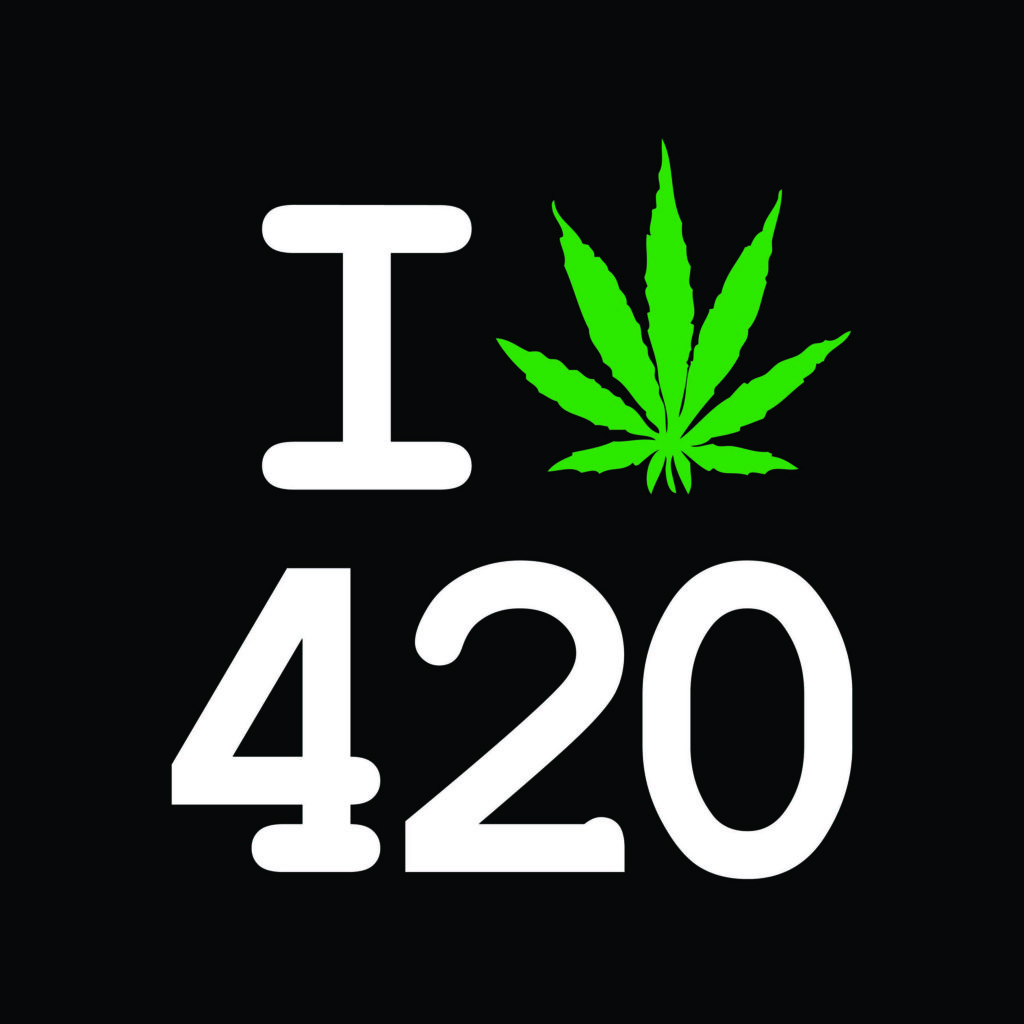
There’s a well-known urban legend, likely rooted within America in the 1970s, that “420” was a police code referring to cannabis use.
However, this may not actually be the case. Some rumours and closer examination on the history of cannabis lead back to five high school students in rural, Marin County, California.
According to this rumour, these individuals found a “secret pot garden” with a “non-existent” owner. The word 420 actually refers to the time in the afternoon they decided to meet after school to hunt down this garden.
Apparently, weeks passed, and the plants were never actually found. Although the high school students may have given up on their search, the 420 code appeared to have stuck and become synonymous with the history of cannabis culture.
8. Uruguay was ahead of the curve
A dramatic arrest shook up this South American country in 2011 when 66-year-old Alicia Castilla author was sentenced to 2-10 years in jail. Her horrific crime? Watering her cannabis plants on a nondescript Sunday afternoon. Yes, watering her garden.
At that point, cultivation and selling were largely forbidden. Castilla quickly became a national celebrity and incredibly liked among her inmates, even nicknamed the reefer grandmother.
In response, the public was outraged. There were marches, protests, boycotts, and petitions happening all over the country. Legislators brought in potential bill and law proposals suggesting the legalization of cannabis.
In 2014, it was completely legalized across the entire Uruguayan territory, becoming the very first country in the entire world to do so.
Citizens across the country can legally purchase up to 10 grams of cannabis each week, identifying themselves with a digital thumbprint. Today, the drug is completely regulated and often sold in mainstream street pharmacies and markets.
9. Cannabis may have been an ancient tumour treatment
In the examination of ancient Egyptian text, the 2nd-century literature named Fayyum Medical Papyrus discusses terminal illnesses and their treatments.
Apparently, according to this fascinating text, cannabis was one of the main medicinal components used for both early and late-stage cancerous tumours.
Although it is hard to find exact data and facts, other images and text support the idea that this ingredient was, in fact, used. Today, modern society is no stranger to cannabis for cancer treatment.
For (cancer) patients, cannabis is associated with:
- decreasing nausea and vomiting
- decreasing neuropathic pain
- increasing appetite and food intake
- decreasing narcotic pain medication needs
- increasing weight gain and stabilization
- potentially slowing cancerous growth
Medical applications of cannabis don’t stop at that. Many medical doctors and oncologists today are looking into the effects of cannabis to assist in opioid withdrawal and pain management. With the spike of illicit narcotic abuse, professionals are continuously seeking effective ways to manage chronic pain, severe illnesses, and incurable diseases.
The history of cannabis shows that this substance may have more to offer these populations than we ever thought!
10. Prescription meds have used cannabis for years
Even before the widespread legalization movement and open discussion about the history of cannabis, it was being used medicinally.
In the United States alone, cannabis was considered an effective medical ailment, included in over 20 prescription medicines.
It was even listed in the United States Pharmacopeia in 1851. The USP is the most respectable, official list of all prescribed medications. This institute still exists today, and the book from 1851 discusses how botanical drugs shifted into pharmacological use.
Some of the conditions cannabis was prescribed for? Epilepsy, depression, chronic pain, hysteria, anxiety, and muscle spasms.
The book also proceeds to discuss how cannabis can help with sleep and relieve pain and how it does resemble opium, though it does not affect bowels or appetite in the same way. Other symptoms it highlights include happiness, exhilaration, and hallucinations.
It appears that cannabis and its extracts were widely used for medicinal purposes up until 1942, when legislation and anti-drug campaigns began impacting its use.
In the end, there’s no doubt the history of cannabis remains complex, fascinating, and constantly evolving. While many of these facts can be “difficult to prove,” learning different theories and perspectives offers us an interesting insight on the most popular substance in the world.





